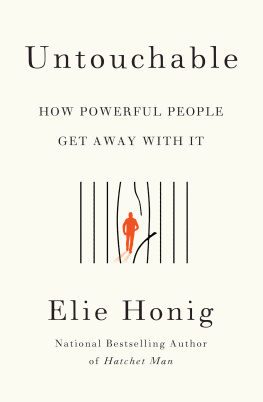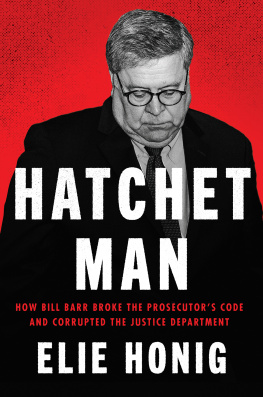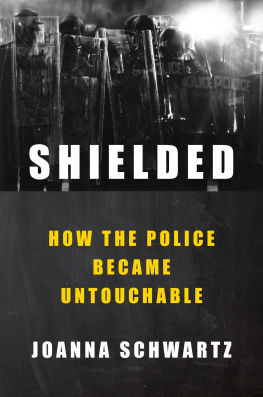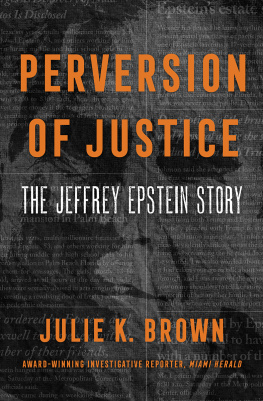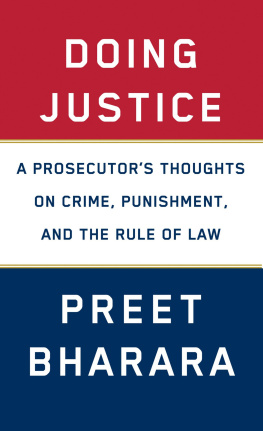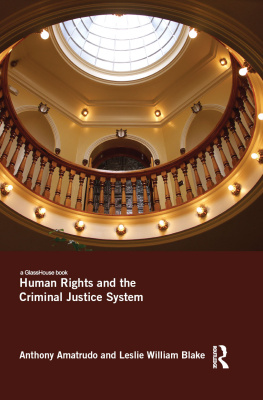Frank Hydell had no idea that the beer he drank at Scarlets strip club in Staten Island on a cool spring night in 1998 would be his last.
It was, he believed, just a casual, two-guys-with-nothing-better-to-do Monday night out. John Matera, Hydells longtime pal, had called early that evening and proposed they grab a drink at the club. Hydell, then thirty-one years old, half-heartedly agreed. He hardly even bothered to get dressed, wearing navy-blue sweatpants and white sneakers to the scene of his own murder.
Inside Scarlets that night, Hydell and Matera took a table and ordered some beers. At one point Matera got up and made a call from a pay phone. Around midnight, seeing that things were headed nowhere in particular, Hydell called it quits. He gathered up his wallet and keys, walked out to the parking lot, and opened the drivers-side door of his white Camry.
Theres no way to know whether Hydell ever saw Eddie Boyle coming. Either way, it all happened too fast for Hydell to resist or even react. Hydell knew Boyle from the streets. Both hovered on the periphery of the Gambino family. Boyle was a capable guy (capable of violence, that is, in mob parlance), while Hydell was a bit player who dabbled mostly in after-hours bank burglaries. That night in the parking lot at Scarlets, Boyle strode briskly up to Hydell, pulled out a .357 Magnum revolver, and shot him three times in the head and chest. Hydell fell dead to the asphalt next to his car, drivers-side door still flung open.
* * *
When I first met Ted Otto in 2006, he was obsessed with the Hydell murder. Otto, a brilliant, incorrigible, relentless FBI special agent with the Queens-based Gambino squad, had investigated and solved plenty of mob cases over his career, often deploying unorthodox techniques. He once typed up pages of phony transcripts, put them in a binder, and showed them to a Gambino soldier to try to convince him that the FBI had been wiretapping his phone and he needed to flip; didnt work, but it was a hell of an effort. Otto was a world-class pain in the assbeloved by prosecutors, tolerated with a wince by his FBI supervisors, despised by the mob. Think Detective Jimmy McNulty from The Wire, only with reddish-blond hair.
Despite Ottos many investigative successes, the Hydell murder gnawed at him. Maybe it was the sheer cold-bloodedness of the Gambino family mobsters who plotted Hydells death, who exploited the cover of Materas friendship to lure him to Scarlets and execute him in the parking lot. Perhaps it was that Hydell was targeted because he had begun to cooperate with the FBI, providing valuable information about crimes committed by other gangsters right up until he was silenced. It could have been that Otto refused to accept the unimaginable grief of Hydells mother, who found herself mourning the loss of a second child to the mob; her older son, James, had been lured to his death at the hands of a different Mafia family, the Luccheses, twelve years earlier, in 1986. Whatever it was, the Hydell murder bothered Otto so deeply, and for so long, that he carried in his own wallet a funeral card bearing Hydells image.
Over time, Otto doggedly chipped away at the Hydell murder. I worked with him as the lead prosecutor during the latter phases of this effort. A few years before I got involved, Otto and a team of my colleagues at the Southern District of New York (SDNY) got their first break when they flipped powerhouse Gambino family captain Michael DiLeonardo (known on the streets as Mikey Scars, referring to facial scars he had sustained as a child from a dog attack). The mob was in DiLeonardos blood. He was the grandson of a Sicilian-born member of the original Black Hand faction of Italian immigrants to the United States that staked its claim to criminal dominance in Brooklyn in the early 1900s. As he rose through the Gambino family, DiLeonardo excelled across the criminal spectrum. He was an earner and a burner, in the parlance: he brought in millions through construction rackets, and he could hand out a beating, or worse, as necessary to intimidate or eliminate anybody who posed a problem. His decision to flip, when faced with a slate of charges that threatened to keep him behind bars for the rest of his life, sent tremors through the mob world.
When he started to cooperate, DiLeonardo gave prosecutors and the FBI reams of information about crimes that he and others had committed over decades. Ultimately, he would testify in a dozen trials and contribute to the convictions of about eighty gangsters. But when it came to the Hydell murder, DiLeonardo had only a few precious dribs of actionable information. Most importantly, a fellow Gambino family member, Thomas Carbonaro, once told DiLeonardo that he had driven the shooter, Boyle, to and from the Hydell hit. Carbonaro also boasted that they had enlisted Matera to lure Hydell to the scene and to alert the hit team that the target was in place, through that pay-phone call from inside Scarlets.
After years of investigation, Otto and the team started to get results in court. Based largely on DiLeonardos information, the SDNY charged and convicted Matera (who admitted he was part of the conspiracy to kill Hydell, pled guilty, and received a sentence of twenty years), Carbonaro (who was convicted of plotting to kill Hydell, among many other crimes, and sentenced to seventy years behind bars), and even DiLeonardo himself (as part of his cooperation agreement, he pled guilty to murder conspiracy for passing word within the Gambino family about the plan to kill Hydell, and other crimes).
Later, when I joined the SDNYs Organized Crime Unit, we charged and secured guilty pleas from two other Gambinos, Tommy Dono and Lenny DeCarlo, who were at the scene of the murder in the designated crash car. (Its common Mafia practice to have a nearby car waiting to create a diversion if the actual hit mans getaway car encounters any trouble. If, for example, a police officer had stopped or pursued the shooters getaway car, then the Dono-DeCarlo car would have crashed into something to pull focus and allow the assassin to get away.) Both were sentenced to fifteen years in prison.
Eventually the SDNY charged and tried Boyle, the shooter. The jury, somewhat bizarrely, found Boyle not guilty of murdering Hydell but guilty of racketeering conspiracy chargesmeaning that Boyle was part of the Gambino family, and knew that the family was involved in multiple crimes, including murder. The judge sentenced Boyle to the maximum of twenty years, specifically finding at the sentencing hearing that he had in fact killed Hydell. (This can and does happen in our criminal justice system; even if the jury acquits a defendant on a particular count, the judge still can find at sentencing that the charge was proven by a preponderance of the evidenceessentially, more likely than notand sentence accordingly.)
Sounds like a clean sweep, or nearly that. All the main players who carried out the murder of Hydell that night in the parking lot at Scarlets were charged, convicted, and sentenced to prison terms, though some of them ultimately felt a bit light. Fifteen or twenty years is a long time behind bars, but didnt seem fully adequate for such a cold-blooded, premeditated murder.
But even after all these convictions, there was still one thing we couldnt ignore, one thing that simply had to be true: Daniel MarinoHydells own uncle, married to his mothers sisterwas behind it all. (This Dan Marino was, of course, not the rifle-armed Miami Dolphins quarterback from the 1980s and 90s, but the cold-blooded Gambino family powerhouse from the past six decades.)
We knew Marino had to have been involved, purely by dint of his position near the top of the Gambino family and his familial relationship with Hydell. Indeed, according to DiLeonardo, when he learned that Hydell was cooperating with the FBI and would need to be eliminated, he sent word to Marino, who was then in federal prison in Pennsylvania. (This is why, years later, as part of his cooperation deal with the SDNY, DiLeonardo pled guilty for his part, small as it was, in the murder conspiracy.)

